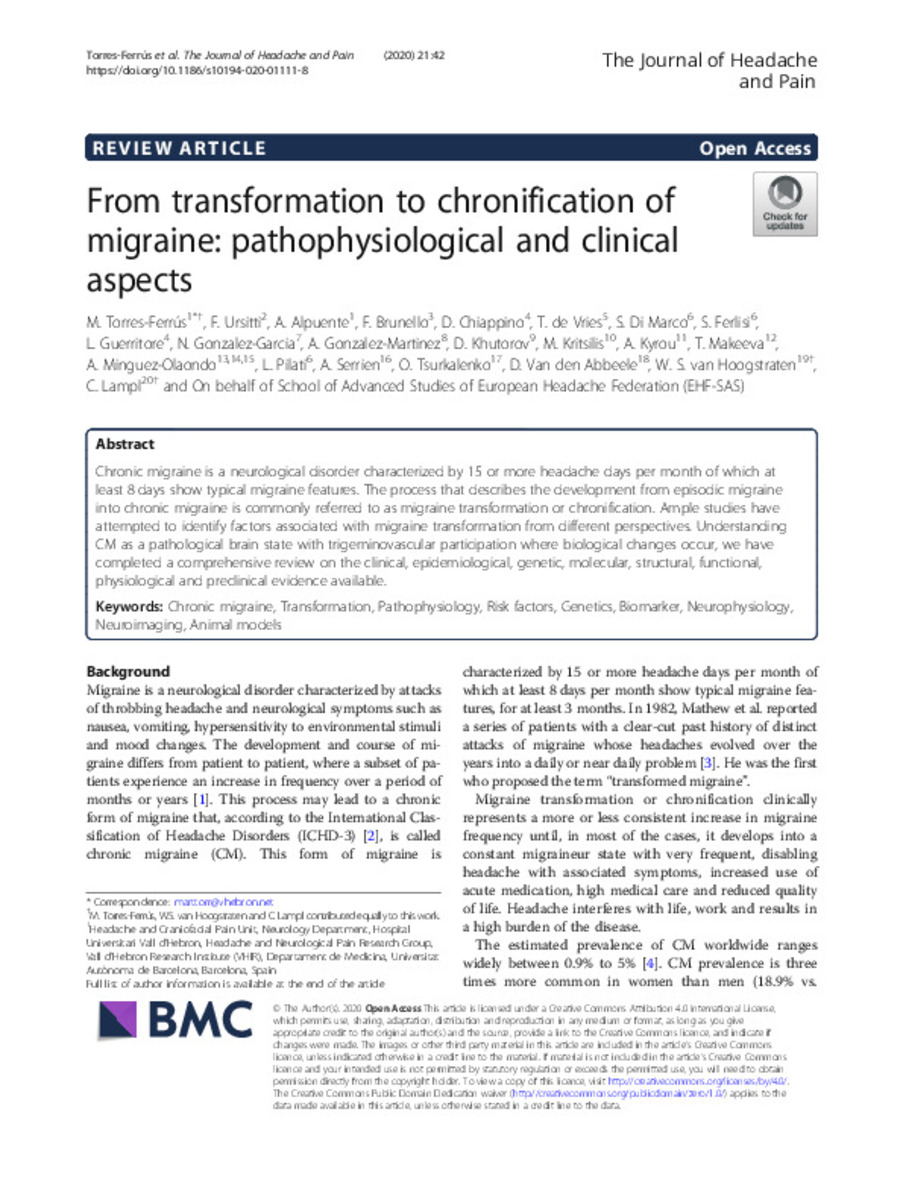From transformation to chronification of migraine: pathophysiological and clinical aspects
Palabras clave :
Chronic migraine
Transformation
Pathophysiology
Risk factors
Genetics
Biomarker
Neurophysiology
Neuroimaging,
Animal models
Fecha de publicación :
2020
Nota:
This article is licensed under a Creative Commons Attribution 4.0 International License
Cita:
Torres-Ferrús, M. (M.); Ursitti, F. (F.); Alpuente, A. (A.); et al. "From transformation to chronification of migraine: pathophysiological and clinical aspects". Journal of headache pain. 21 (42), 2020,
Aparece en las colecciones:
Estadísticas e impacto
0 citas en

Los ítems de Dadun están protegidos por copyright, con todos los derechos reservados, a menos que se indique lo contrario.







